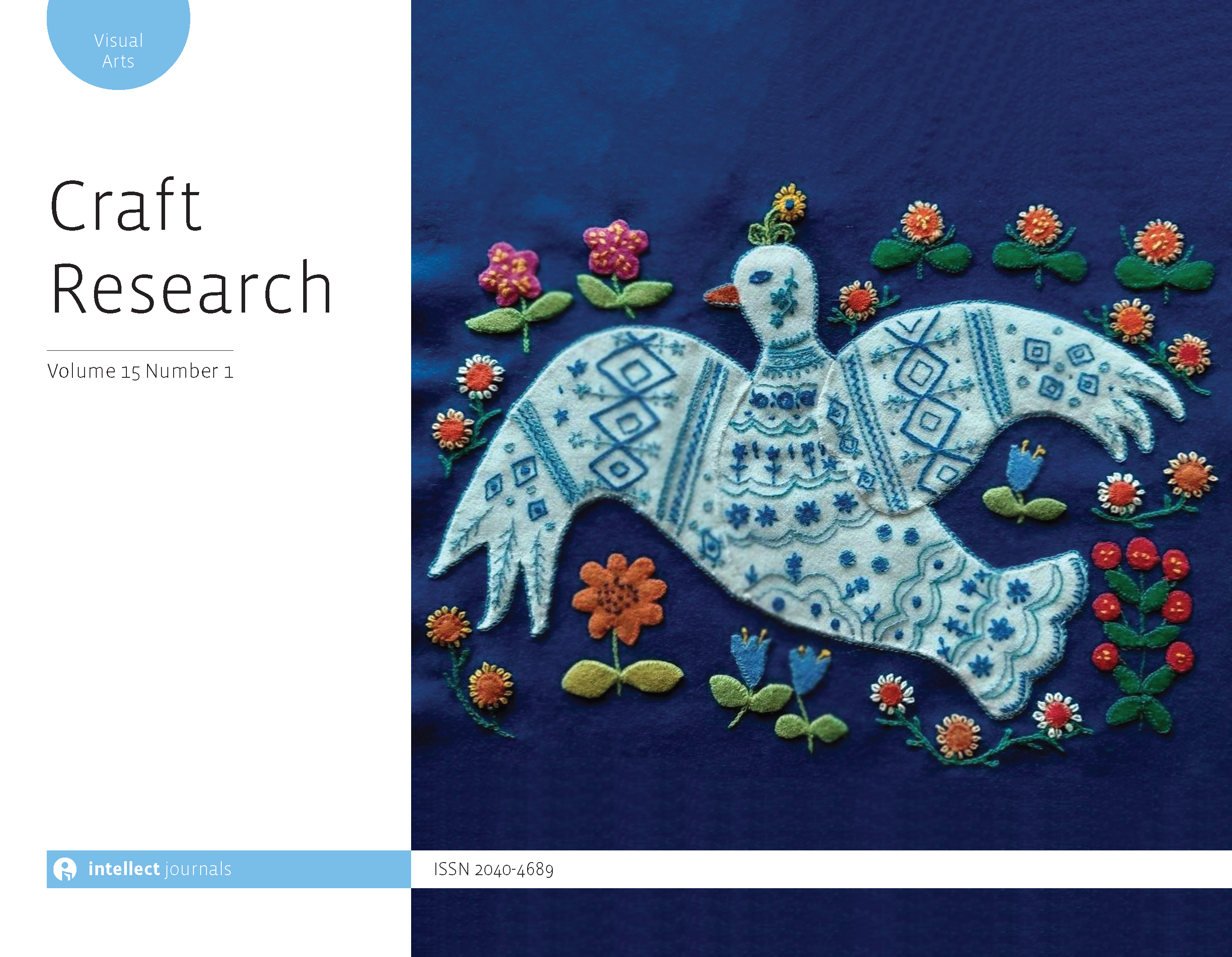-
oa Expanding wood: Developing and validating a new material
- Source: Craft Research, Volume 13, Issue 1, Mar 2022, p. 109 - 136
-
- 01 Feb 2021
- 01 Apr 2021
- 01 Mar 2022
Abstract
Expanded Wood is an openwork panel made out of wood that maintains its original strength but significantly gains width and minimally loses weight. The material uses raw wood in a more efficient way that can help to reduce deforestation and may offer a solution to the problem of dwindling natural resources. This article explores the process of creating and developing the new material through making, experiencing physical models and empirical, physical testing. The combination of these three techniques produces a creative process that is based in both individual sensory perception and quantitative data analysis.
Funding
- Ministry of Culture and National Heritage of the Republic of Poland (Award 08/2018/MP)
© 2022 the Author(s)
This article is Open Access under the terms of the Creative Commons Attribution-NonCommercial-NoDerivatives 4.0 International licence (CC BY-NC-ND), which allows users to copy, distribute and transmit the article as long as the author is attributed, the article is not used for commercial purposes, and the work is not modified or adapted in any way. To view a copy of the licence, visit https://creativecommons.org/licenses/by-nc-nd/4.0/



